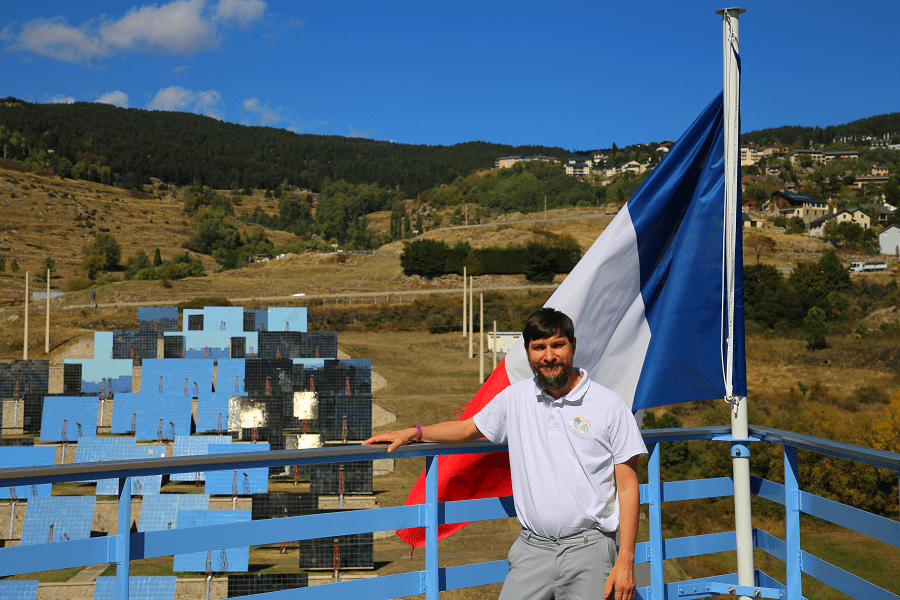Anton Vasil’yevich Solov’yov graduated from the Physics Faculty of Moscow State University in 1990, candidate of physical and mathematical sciences. Associate Professor of Theoretical Physics Department at Moscow State University Physics Faculty.”
At Moscow University he teaches a special course “Differential forms and bundles in theoretical physics”, conducts seminars on the “Theoretical mechanics and fundamentals of continuum mechanics” general course. Secretary of the «Geometry and Physics» scientific seminar and «Metaphysics» interdisciplinary seminar, which work at MSU Physics Faculty.
Theme of the Ph.D. thesis: “N-spinor calculus in the relational space-time theory” (1996). He extends the spinor concept to the case of multidimensional pseudo-Finsler spaces with metric functions of a special form. The algebraic theory of Finsler N-spinors is constructed. Pseudo-Finsler generalizations of the basic quantum wave equations, in particular, the Weyl and Duffin-Kemmer-Petiau equations are obtained. The SL(3, C)-invariant mechanics of a classical particle in a 9-dimensional pseudo-Finsler space is formulated.
Research interests: mathematical methods of theoretical physics, elementary particle physics.
The physical world is four-dimensional; there are three spatial dimensions as well as time according to modern concepts. We consider space-time in physics as a single object in this case. What two views are we talking about?
In short, the substantial and relational ones. We’ve been accustomed from school to perceive space as a set of points equipped with one of these mathematical structures: affine, metric, topological, or some other. Moreover, geometric points are in no way associated with material objects. They are something structureless and ideal. Moreover, matter may or may not fit the space. The space has an independent intangible status.
Space and time are combined into four-dimensional Minkowski pseudo-Euclidean space in the special theory of relativity, and in the general theory of relativity – into curved pseudo-Riemannian space-time. However, the space-time status has not changed. It is a substance consisting of intangible geometric points, and a receptacle for material objects in their temporal evolution. We call this view of space-time substantial. It is generally accepted currently.
What about a relational view?
A radically different view of space and time goes back centuries. So, for example, G. Leibniz in correspondence with Clarke argued: “If there were no created things, then there would be neither time nor place, therefore, there would be no real space”. One understood that space and time are secondary to material objects, and without the latter, they simply do not exist. E. Mach adhered to the same point of view.
What exists then? There are material objects, say, elementary particles that are in interaction relations with each other. Moreover, they exist outside of space and time. Space-time itself and its metric arise as results of macroscopic averaging the characteristics of the boiling ocean of interacting elementary particles, just as randomly moving molecules form a gas, liquid or solid with essentially macroscopic parameters inherent to them, such as pressure and temperature. We call this view of spacetime relational.
How do physical theories implement this approach, because the relational view is highly non-standard?
This is a matter of habit. For me personally, the relational view seems more natural and physical than the substantial one. This is not to say that this view is not represented at all in modern theoretical physics. It manifests itself in quantum gravitation models most often. However, there are independent relational approaches that claim to describe all types of interactions. One of these approaches is being developed at the Faculty of Physics of M.V. Lomonosov Moscow State University in the Professor Yu.S. Vladimirov group.
In approaches of this kind, we construct coordinates of space-time points from some mathematical objects, for example, spinors or twistors. These are very beautiful constructions from a geometric point of view. Nevertheless, Occam with his razor would hardly have liked them: the space-time points’ creation is from the declared more primary, but at the same time more abstract and less tangible objects, i.e., non-physical entities are clearly multiplying. In order not to multiply entities without the need, it is reasonable to connect the mentioned abstract mathematical objects with the wave functions of specific interacting particles, and not with space-time points.
How then can we describe the interactions of particles in a non-spatial-temporal manner? After all, since there is no space, then there are no fields!
This is the main question. Vectors describing particle states in quantum theory actually “live” in their own Hilbert space, which has nothing to do with our physical space-time. In Hilbert space, one can choose various coordinate systems, both related to the space in which we live, and not. The particle state vector is represented by the wave function in each such coordinate system.
There is a special four-dimensional momentum representation in which the wave function depends on the particle energy and momentum. It is important that these are not “real” energy and momentum, but mathematical variables that are part of the so-called Fourier transform. They become real energy and momentum because of a particle interaction with a classical macro device. These abstract variables have no direct spatio-temporal meaning. They are included in the Feynman rules of the diagram technique for describing processes involving elementary particles.
In this connection, very indicative words are the words of R. Feynman himself from his book «Theory of Fundamental Processes»: «I don’t feel it is necessary to start from field theory because it is, in fact, not internally consistent. Anyway, I want to leave a room for new ideas. … Instead we shall give rules for finding the resulting amplitude – because the rules are so much simpler than the steps leading to them».
These rules are really extremely simple. They formalize the following intuitions in the parts related to the interactions’ description. Each particle is a carrier of quantum numbers, such as energy, momentum, charge, spin, etc. The particle interaction act (including their creation and annihilation) simply consists in the redistribution of these quantum numbers between them. Particles exchange their quantum numbers with the fulfillment, of course, of all the appropriate conservation laws. As you can see, neither space-time nor fields are involved here.Thus, the Feynman rules in the momentum representation are inherently relational. The fact that, these days, they are an integral part of perturbative quantum field theory we should not take as a dogma. Their author himself warned against this in the end.
Interview: Ivan Stepanyan











